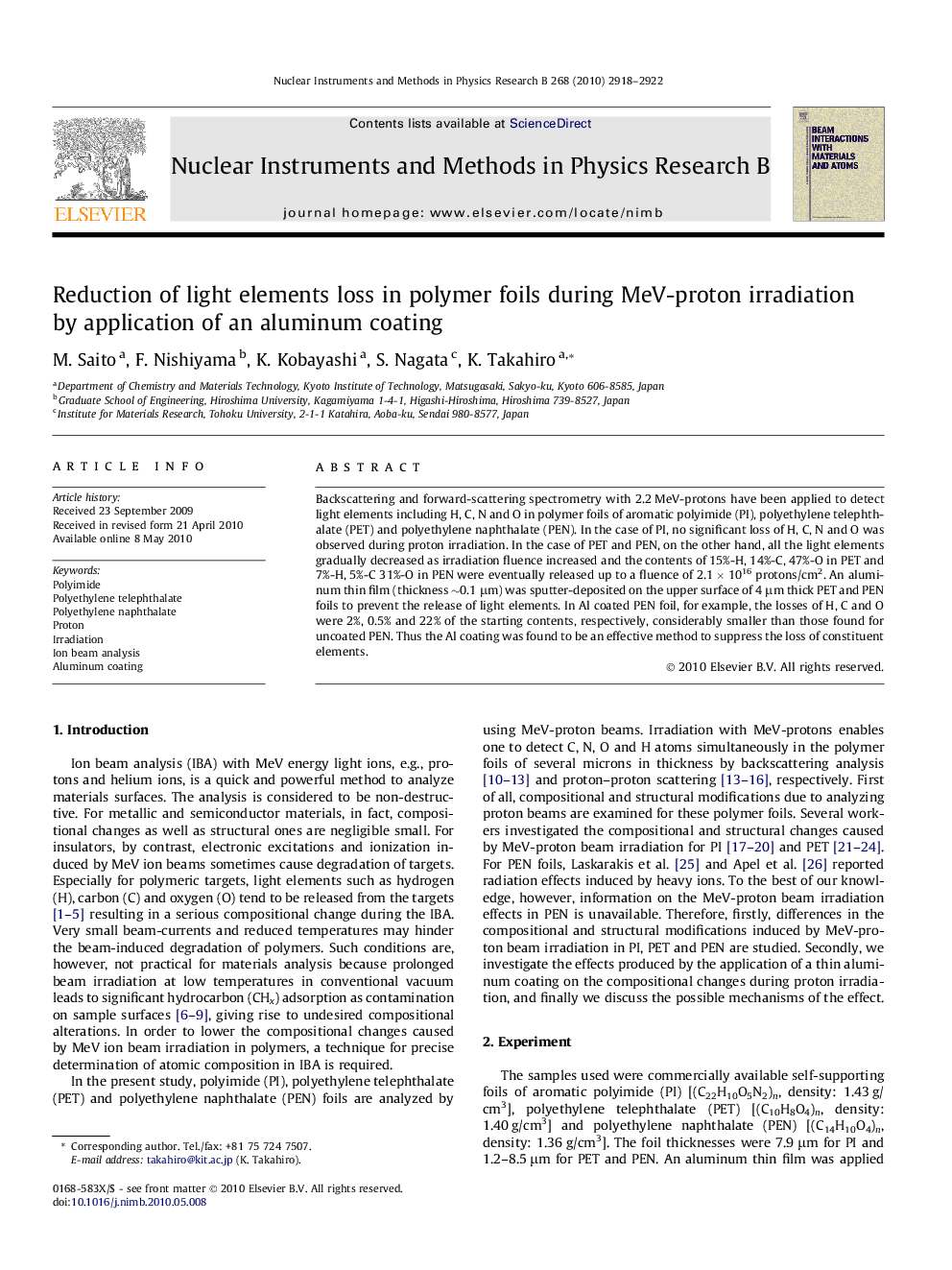| کد مقاله | کد نشریه | سال انتشار | مقاله انگلیسی | نسخه تمام متن |
|---|---|---|---|---|
| 1681365 | 1010437 | 2010 | 5 صفحه PDF | دانلود رایگان |

Backscattering and forward-scattering spectrometry with 2.2 MeV-protons have been applied to detect light elements including H, C, N and O in polymer foils of aromatic polyimide (PI), polyethylene telephthalate (PET) and polyethylene naphthalate (PEN). In the case of PI, no significant loss of H, C, N and O was observed during proton irradiation. In the case of PET and PEN, on the other hand, all the light elements gradually decreased as irradiation fluence increased and the contents of 15%-H, 14%-C, 47%-O in PET and 7%-H, 5%-C 31%-O in PEN were eventually released up to a fluence of 2.1 × 1016 protons/cm2. An aluminum thin film (thickness ∼0.1 μm) was sputter-deposited on the upper surface of 4 μm thick PET and PEN foils to prevent the release of light elements. In Al coated PEN foil, for example, the losses of H, C and O were 2%, 0.5% and 22% of the starting contents, respectively, considerably smaller than those found for uncoated PEN. Thus the Al coating was found to be an effective method to suppress the loss of constituent elements.
Journal: Nuclear Instruments and Methods in Physics Research Section B: Beam Interactions with Materials and Atoms - Volume 268, Issue 19, 1 October 2010, Pages 2918–2922